Fall at Denver Botanic Gardens: Steppe Garden, ornamental grasses, and woodland garden
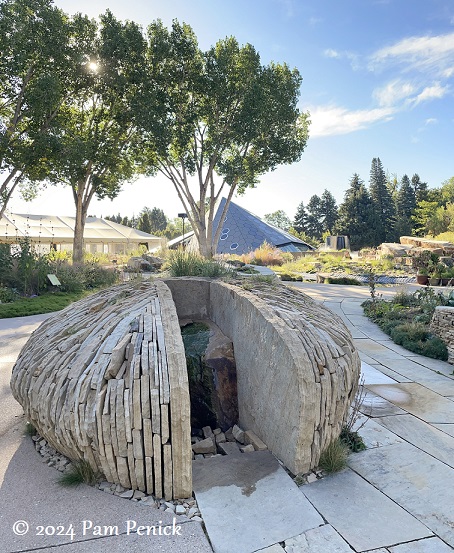
The Steppe Garden at Denver Botanic Gardens delights with three large crevice planters on a stone plaza. They’re intricately constructed. The central one reminds me of a loaf of bread or those old-fashioned wooden puzzles that fit together in a certain way. Or maybe a wheel of cheese with a wedge cut out, where a fountain trickles within. I’ve never seen anything like them.
This is Part 2 of my tour from my visit in late September.
Steppe Garden
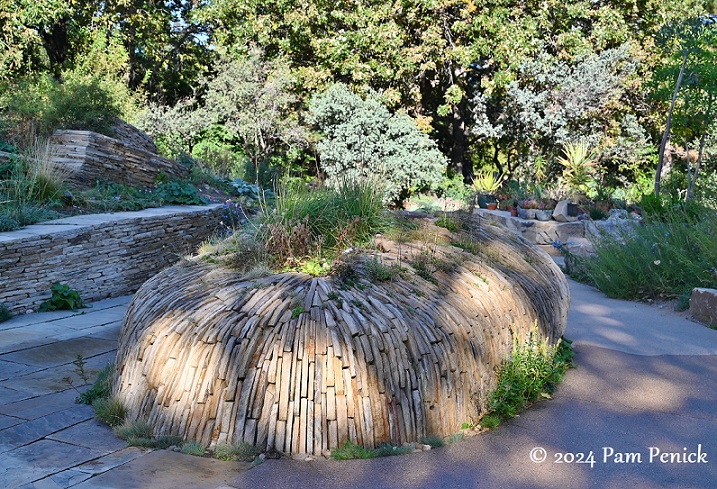
DBG’s website about the Steppe Garden provides this description:
“Entering the Steppe Garden you will notice three large stone structures. These curious objects are planters that all have specific uses and showcase important microcosms within the greater steppe biome.
- One of the planters showcases plants that are called “living stones.”
- The central planter has a small trickling fountain to illustrate the importance and scarcity of water in the steppe.
- The last planter highlights cushion plants, an adapted growth form.
These planters were painstakingly constructed by the Gardens’ stonemasons and are not only works of art but are becoming living interpretations of specialty conditions and a unique way to grow plants from very specific ecological niches.”
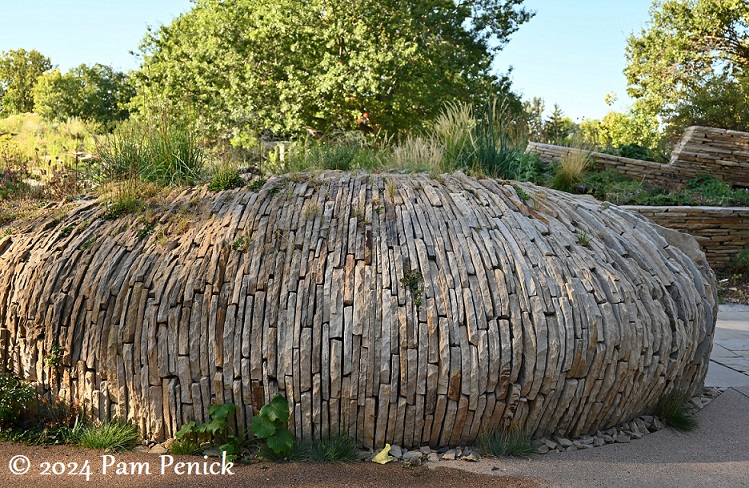
That stonework!
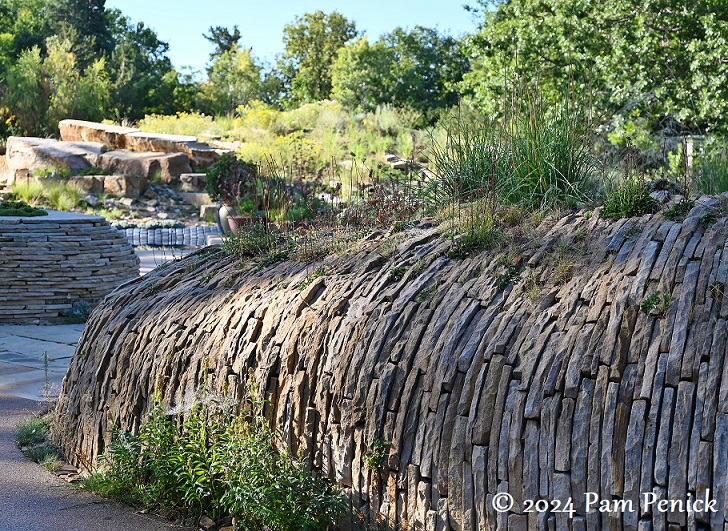
Small crevice-loving plants grow on the rocky top.
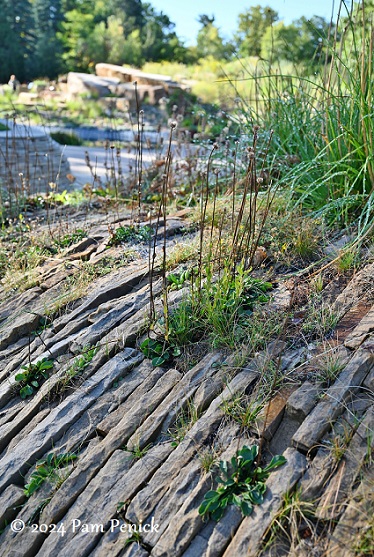
If you’re not familiar with the term steppe, it’s a semi-arid grassland with hot summers and cold winters. Denver, located on the plain in the rain shadow of the Rocky Mountains, has a steppe climate, although I don’t consider their summers hot in comparison with Texas summers. Still, it’s all relative, and they don’t have Seattle-cool summers, for sure. Like all steppe regions, they experience big temperature swings and aridity, which impacts their plant palette.
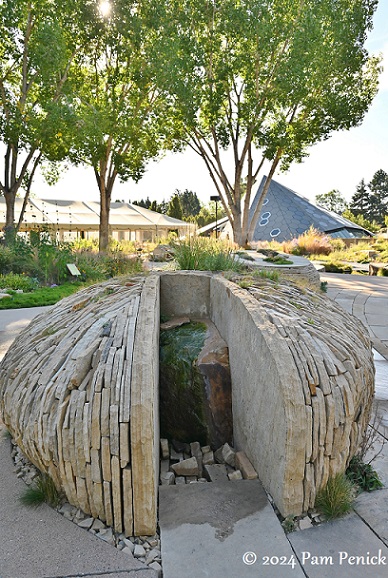
Whenever I’m at DBG, I notice the pyramid structure next to the Steppe Garden, but I’ve never once thought to go inside. It’s DBG’s Science Pyramid, with an ecology exhibition that probably includes information about living and gardening in a steppe climate. Next time I’ll go see it for sure.
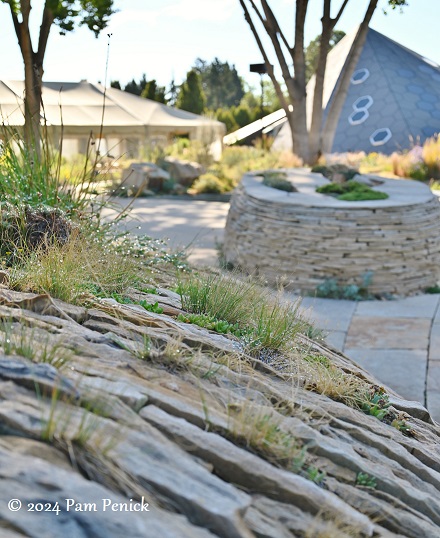
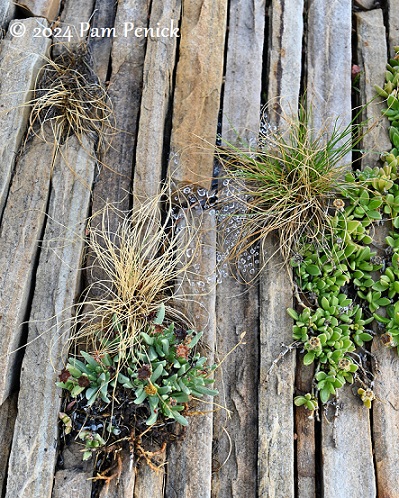
A spiderweb captures morning dew or irrigation moisture.
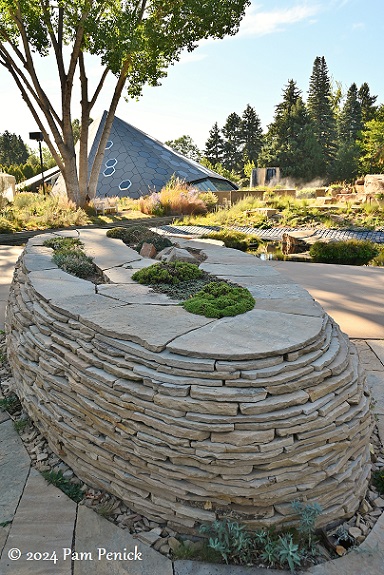
For this flat-topped planter, there’s a lot of stonework to display so few plants, but the effect is striking nevertheless.
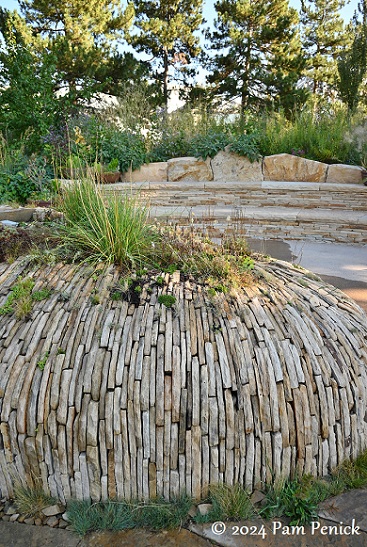
Still, this one is my favorite.
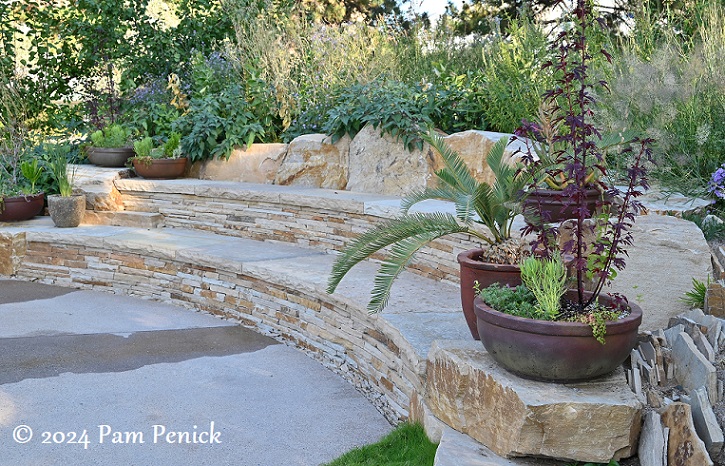
A tiered stone bench offers a spot to rest and admire the garden.
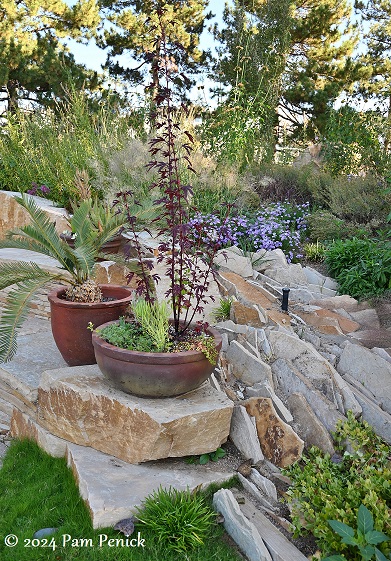
A crevice garden with vertical stone slabs runs behind the bench.
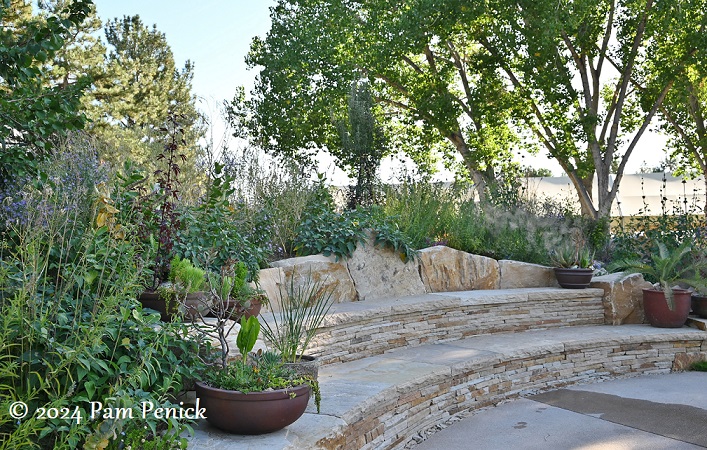
Ornamental Grasses Garden
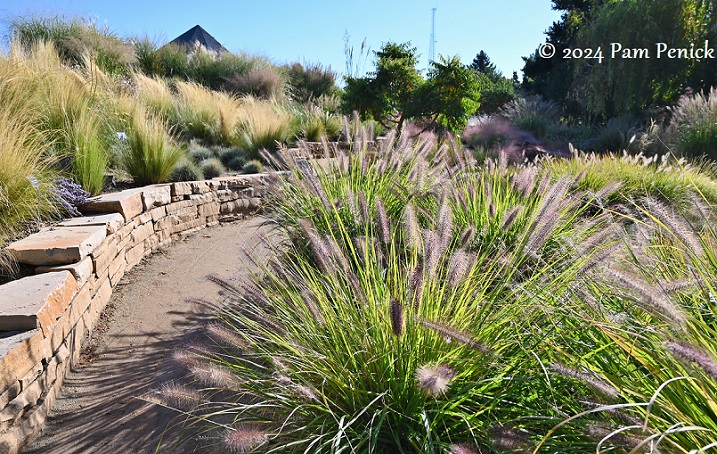
The Ornamental Grasses Garden is one of 18 arid gardens at DBG showcasing plants that thrive in Colorado’s dry climate.
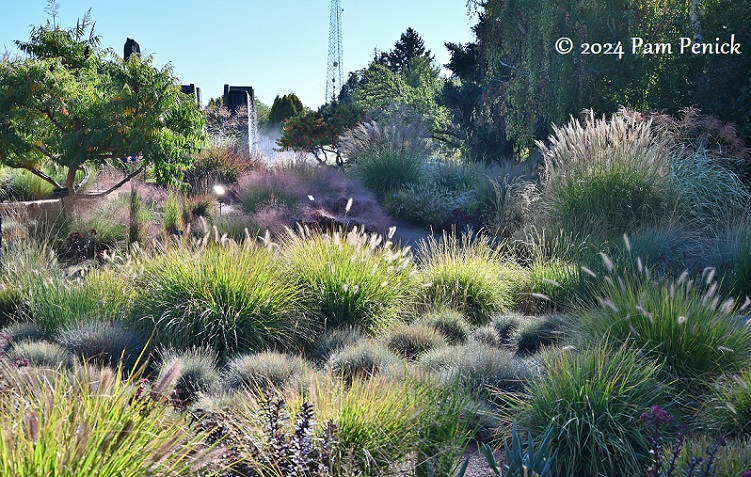
In late September, it was aglow with the colorful seedheads of all the grasses.
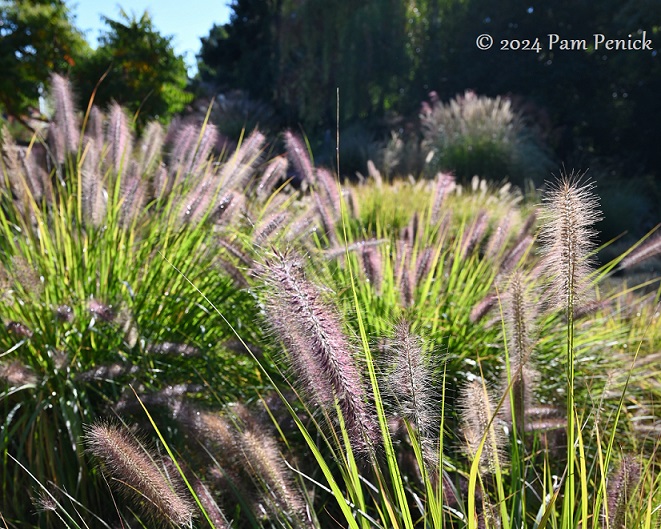
This wine-red bottlebrush inflorescence belongs to ‘Red Head’ Chinese fountain grass.
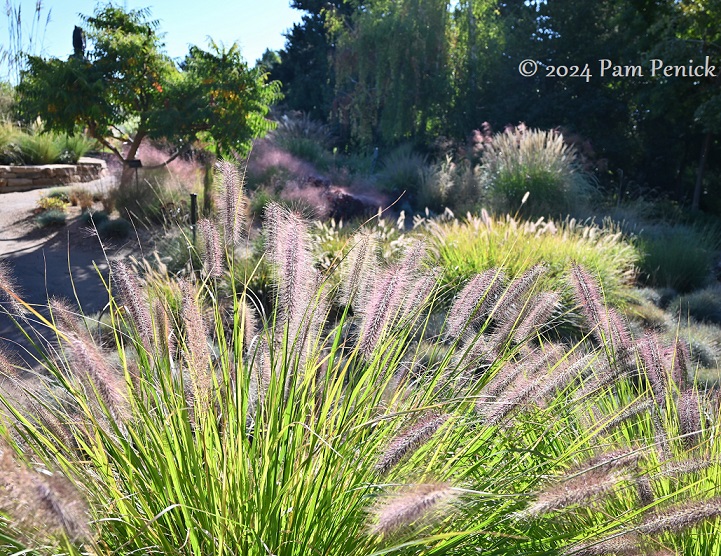
So pretty
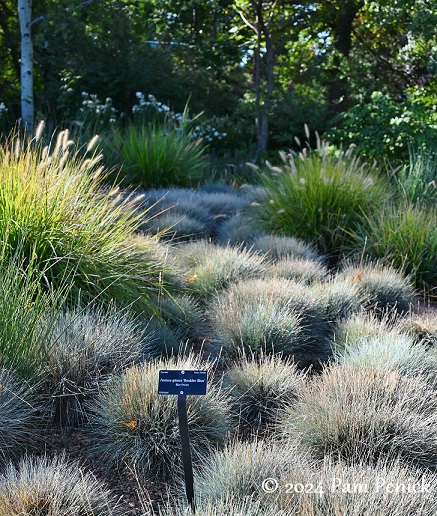
‘Boulder Blue’ blue fescue meanders stream-like through the garden.
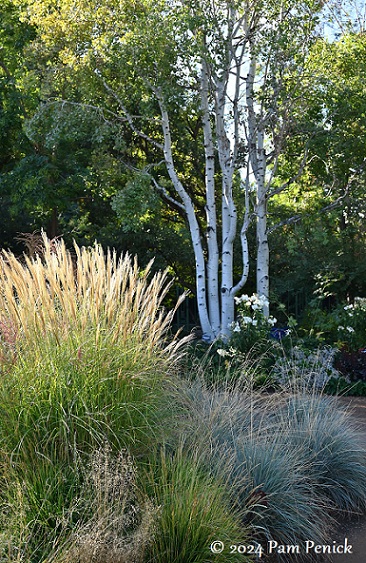
Taller grasses lift the eye skyward, as does a shapely, white-trunked aspen.
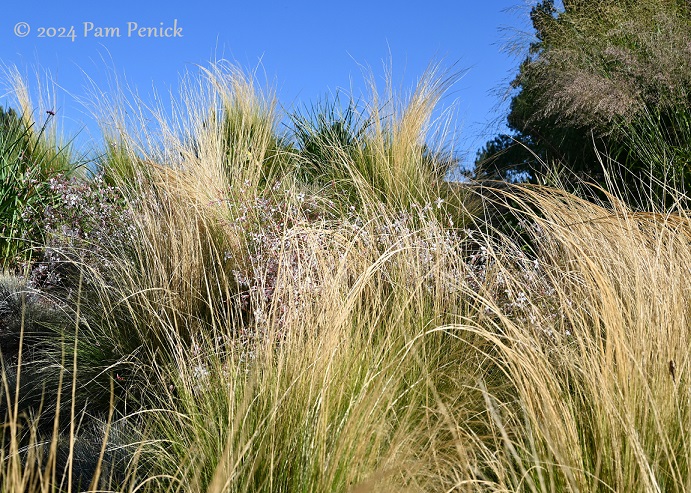
Mexican feathergrass, which blooms earlier in the year, mingles with fall-blooming perennials.
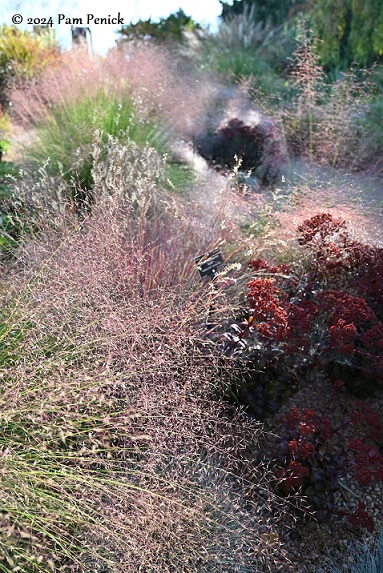
‘Undaunted’ ruby muhly grass sparkles with rosy seedheads. A red-flowering sedum makes a perfect companion.
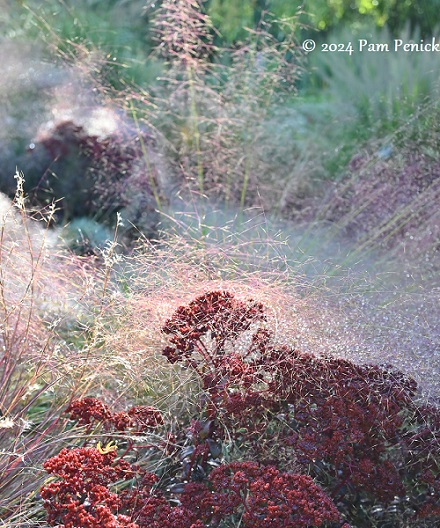
Gorgeous!
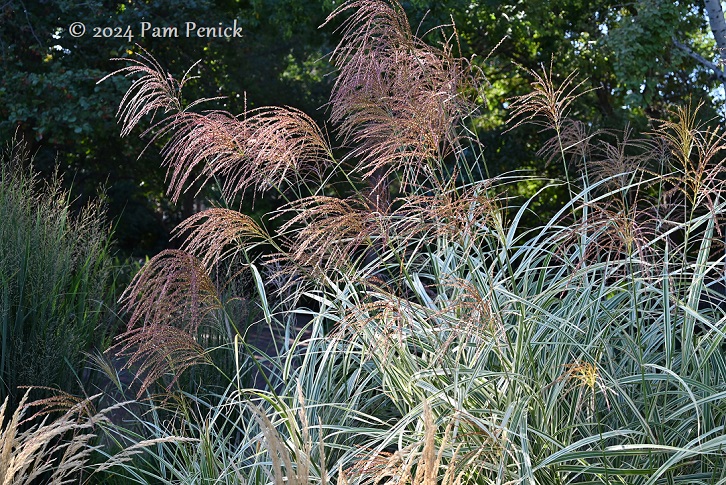
Variegated miscanthus grass waves cinnamon pennants.
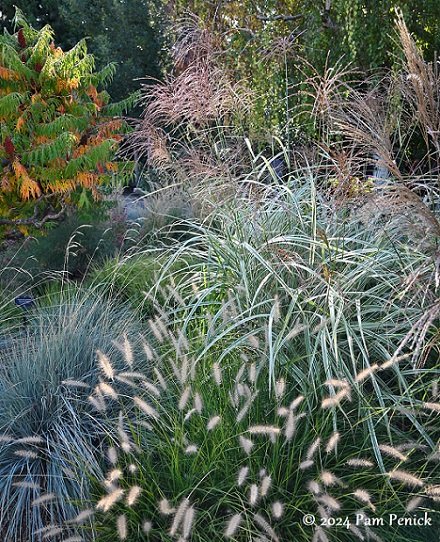
A grassy combo of pennisetum, fescue, and miscanthus in bloom looks like fireworks going off.
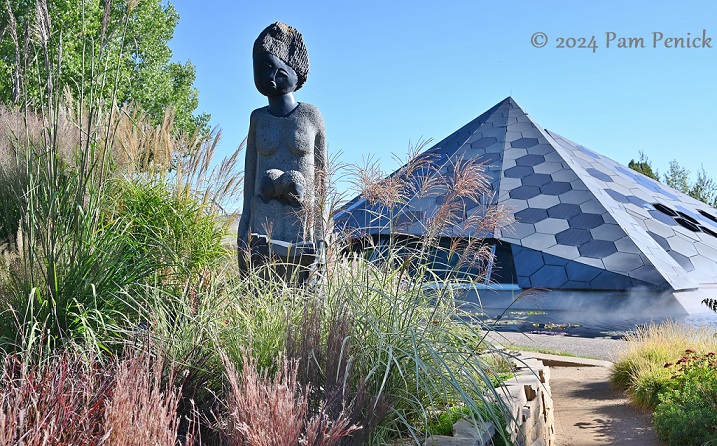
Walking toward the Science Pyramid, you’re greeted by a stone sculpture, So Proud of My Children, by Zimbabwean artist Nicholas Kadzungura.
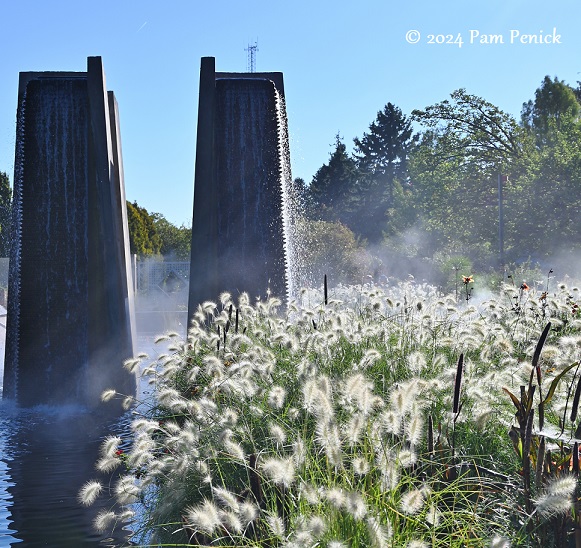
Next to the pyramid, four fountain towers recirculate water in a large pond.
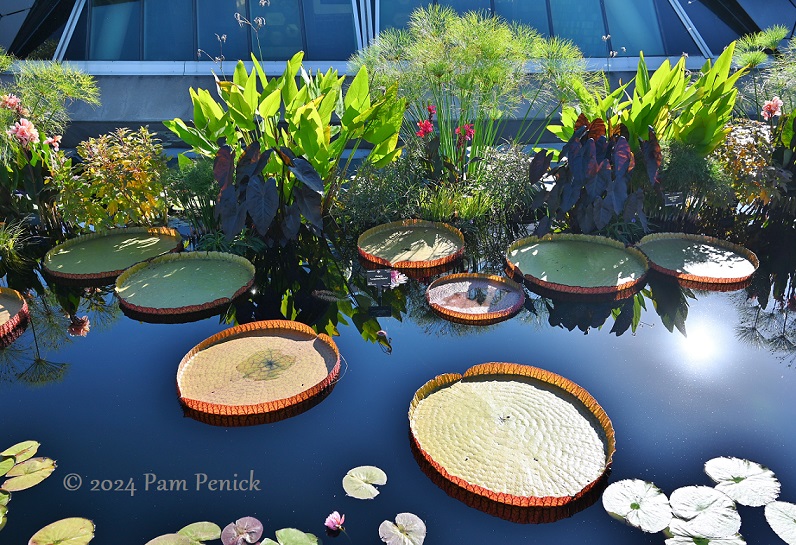
Waterlilies and bog plants brighten the dark dyed surface of the pool.
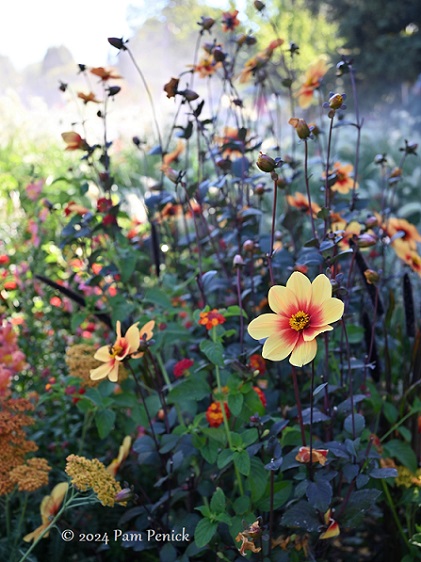
Charming yellow-and-red dahlias with nearly black leaves caught my eye as I turned to walk back through the grass garden.
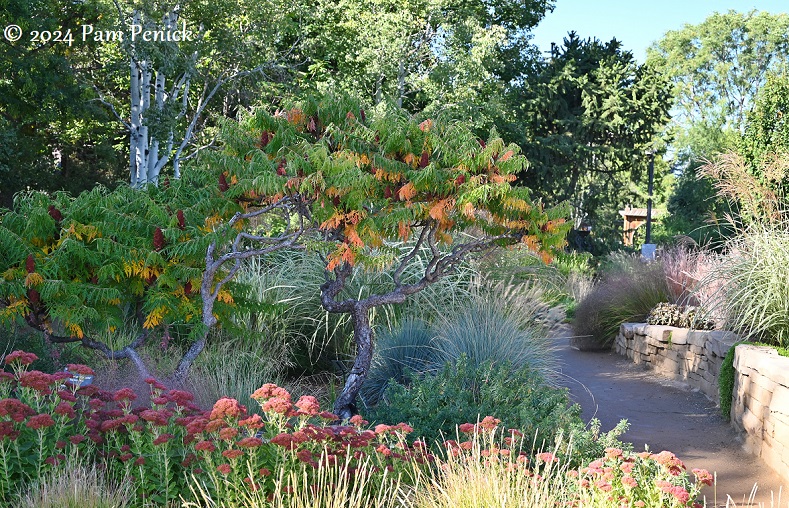
Cutleaf staghorn sumac (Rhus typhina ‘Dissecta’) was adding a hint of fall color behind red-flowering sedum.
Woodland Mosaic Garden
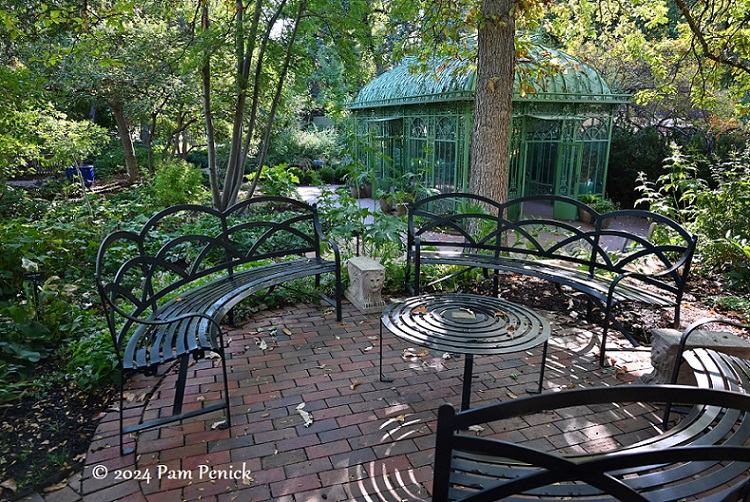
After the bright sunlight of the steppe and grass gardens, the Woodland Mosaic Garden offers shade and coolness. I love this intimate circular patio with curved benches and ripple-like table. Beyond, a filigreed green solarium adds romantic ambiance.
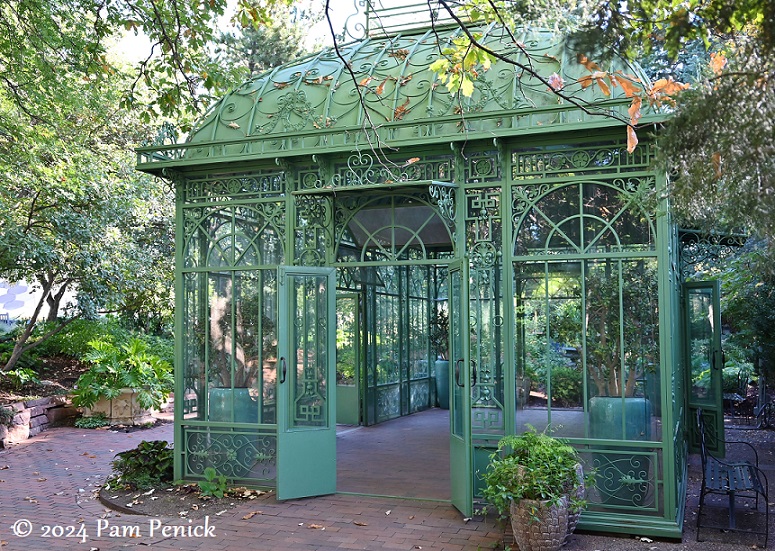
I imagine this is a lovely spot for a small wedding.
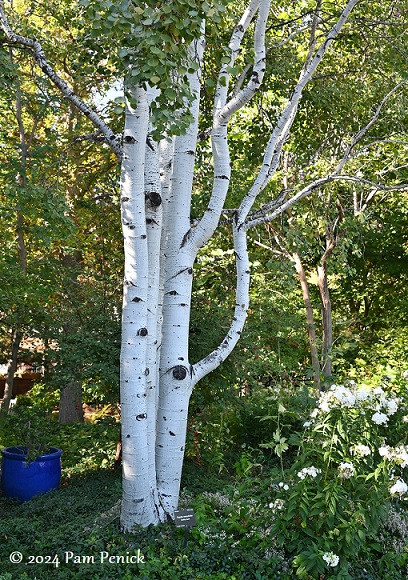
White aspen trunks shine at the woodland’s edge.
Up next: The PlantAsia Garden and Birds and Bees Walk at Denver Botanic. For a look back at DBG’s entry garden, Water-Smart Garden, and amphitheater, click here.
I welcome your comments. Please scroll to the end of this post to leave one. If you’re reading in an email, click here to visit Digging and find the comment box at the end of each post. And hey, did someone forward this email to you, and you want to subscribe? Click here to get Digging delivered directly to your inbox!
__________________________
Digging Deeper
Come learn about gardening and design at Garden Spark! I organize in-person talks by inspiring designers, landscape architects, authors, and gardeners a few times a year in Austin. These are limited-attendance events that sell out quickly, so join the Garden Spark email list to be notified in advance; simply click this link and ask to be added. Read all about the Season 8 lineup here!
All material © 2025 by Pam Penick for Digging. Unauthorized reproduction prohibited.


DBG is on my bucket list to someday visit. I have seen so many posts, pictures, presentations and pieces in books that I feel I know the garden well but nothing beats visiting in person. A beautiful time of year for your visits. Your photos are stunning and do a great job of capturing the intricacies of the design and tiny plants in the crevices.
Thanks, Elaine. I hope you’re able to visit DBG one of these days. It’s a wonderful botanic garden.
I like the Steppe Garden and have too been playing around with flagstones stacked vertically. I do wonder if I am making more work for myself. Like weeding a brick patio, I envision all those crevices with interesting plants but it may just fill in with the weed of the locale.
I wonder too if this is a garden style best suited for arid or semi-arid regions, where weed pressure would be less. I know of a wonderful Austin crevice garden, and the owner was careful to site it away from trees and neighbors’ lawns, where leaf litter and grass seed would fall, and he is very sparing with irrigation to prevent just that problem.
What a treat it is to see my workplace through your artistic eyes! Thank you! Our paths must cross on your next visit!
Thanks for popping over, Panayoti! I will definitely reach out the next time I visit DBG.
Enjoying your wanders thru DBG, a garden I’ll probably never see in person. Loved all the beautiful grass seed heads and the incredible stone creations. Your photos capture it all so well, Pam, thanks. Looking forward to the next installment.
Thanks for following along!
WOW that rockwork!!! What a beautiful garden. It is now on my list. Thanks for the photo tour.
It should definitely be up high on your list. And you know, Denver is just not that far from Central Texas, only a two-hour flight.
Wonderful memories of our Fling visit to this garden. Thanks for the great photos!
My pleasure, Loree.
I love that rocky ‘loaf’. I pictured it in my Seattle garden… totally covered in moss within a few winters 😀
I learned the term ‘steppes’ from reading Jean Auel’s The Clan of the Cave Bear and the fantastic series of books that followed. Turns out, those arid grassy plains were essential to human evolution as glaciers receded.
If that romantic, ‘filigreed green solarium’ was mine, it would have been my winter sanctuary, filled with plants, lights and a chaise lounge.
Chavli
I got a laugh out of your image of the “rocky loaf” swallowed up by moss in your Seattle garden. 😉 I remember Clan of the Cave Bear — wow, memories.
This post has me enjoying the DBG all over again. Thanks for the refresher on crevice and steppe gardens, Pam. It’s a wonderful place that I’d love to revisit!
I’m glad you enjoyed the refresher, Jane!
OMG, that stone work! SWOON!!!!! I have got to visit this place & take notes!
Right?? The stonework is amazing.
The steppe area was another favorite of ours during our trip to DBG. I remember trying to get some seeds of similar plants from the North American Rock Garden Society to try in my own home garden. Beautiful!
This garden makes such an impression with those amazing stone planters.